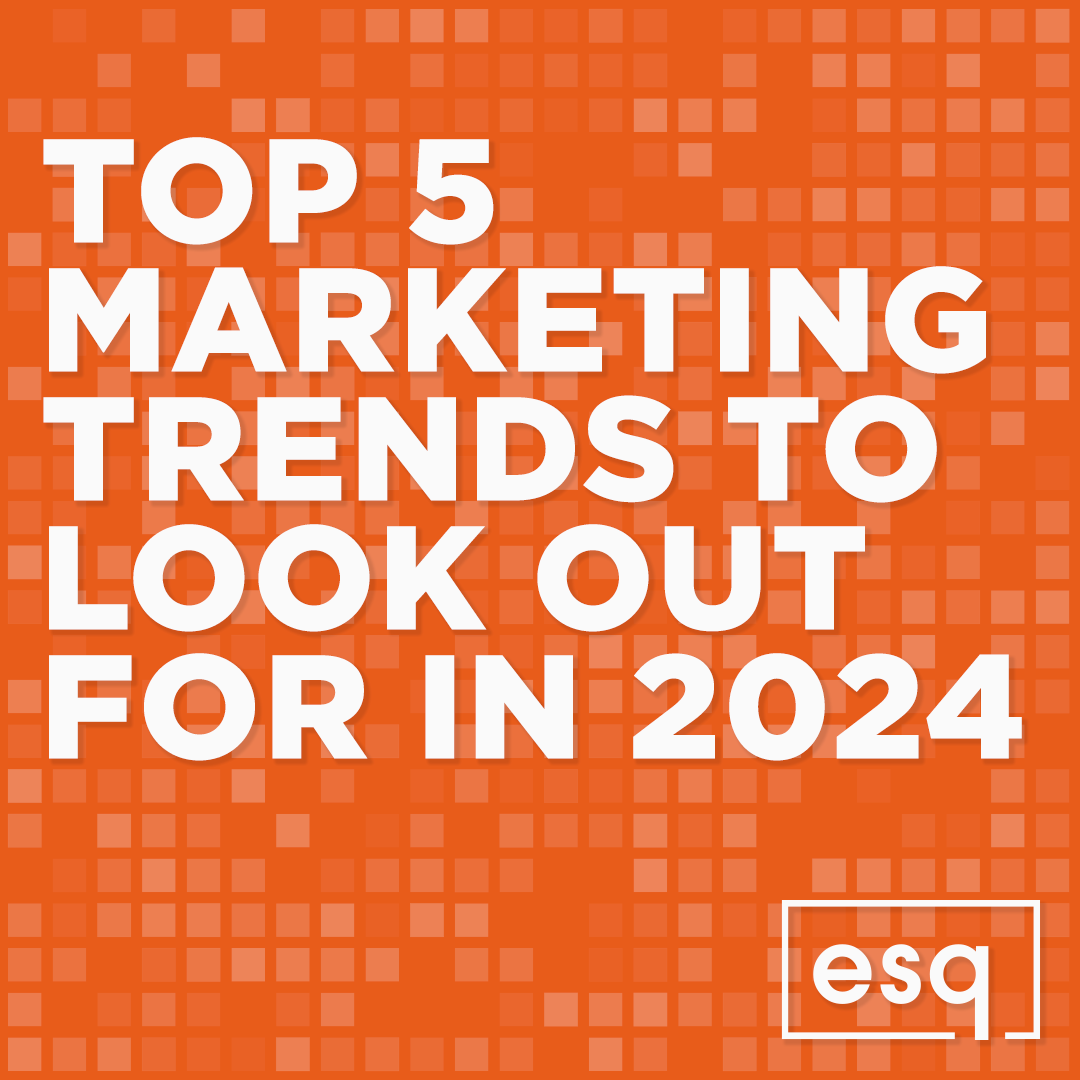With a new year comes new marketing trends. And while it can feel impossible to keep up with the latest marketing technology and shifts in consumer behavior, it’s critical for companies to stay atop these trends so they can effectively connect with their audience and stay relevant in the new year and beyond. From Generation Alpha to the increase of advertising opportunities on streaming services, below is a list of the top five trends we predict to have the biggest impact on the consumer marketing industry.
Social Media Giants Compete for the Ultimate AI Feed (Insider)
Since its launch in 2016, TikTok has become one of the fastest-growing social media platforms in the world due to its infamous “For You” page, an algorithmic feed that uses artificial intelligence (AI) to tailor the type of content each user sees based on their previous interactions in the app (i.e., how long they watch a video, what types of videos they share, etc.). Unlike other social media platforms, which previously focused on promoting content with mass appeal, TikTok’s algorithms highlight trends and interests users might not have previously recognized, allowing niche communities to find new and engaging content personalized to them. As TikTok’s dominance grew, other social media giants like Meta (formerly Facebook) and YouTube started to implement similar AI feeds and are now left competing for the best use of the technology within their platforms. Some experts predict that these companies will implement AI filters, allowing users to filter the content that appears on their feeds through natural language, such as “cute puppy videos” or “quick dinner recipes.” TikTok is reportedly already testing out this type of tool for some of its users. Other experts think AI and machine learning will become more of a commodity, with Meta recently announcing plans to build and eventually sell its own artificial general intelligence (AGI), a type of AI that “meets or surpasses human intelligence in almost all areas.” Either way, all signs point to the growing integration of AI in the social media realm, and thus, more personalized feeds and a bigger push for niche content. While this may result in less frequent user exposure to marketers’ content, those who do encounter it are more likely to be interested and engaged. As such, companies must be able to adapt their marketing strategies and expectations to align with the current wave of AI-based social media platforms. Creating memorable and creative ads, emails, and content, is becoming more crucial to stay afloat the AI-generated content. Organic and catered content is the best way to capture their attention and stand out among their oversaturated social feeds.
Generation Alpha Enters the Scene (Insider)
Generation Alpha, which immediately follows Generation Z, includes children born between 2010 – 2024 and is the first generation to be entirely online. While it’s hard to gauge the true impact Gen Alpha will have since some of its members are still being born, it is considered a “landmark generation” since no prior age group will be as large in size or marketing power. As the oldest members approach their early teens, many of them are starting to manage their own money and make their own purchases, with various payment apps and debit cards dedicated to young teens. Market research also shows that they have the biggest influence over adults’ purchasing decisions compared to any prior generation. For marketers, this means an entirely new group of people developing brand awareness and loyalty and swaying consumer shopping behavior. While Gen Alpha shares a few similarities with their Gen Z and Millennial counterparts, such as interest in issues like sustainability and social equality, Gen Alpha holds brands to a greater expectancy of change compared to older generations. Gen Alpha’s also forecasted to be the most diverse generation, so it’s important for brands to research this new demographic and experiment with the best ways to market to them. Doing so can bring more money from their parents’ wallets and future loyal customers.
Streaming Services Adopt Cheaper, Ad-Supported Subscription Tiers (Insider)
Although Netflix used to support and even encourage its members to share accounts via password sharing, they decided to crack down on the practice in May 2023 after losing almost a million subscribers between April and July 2022 due to tough competition from other streaming services like Disney. The company later announced that it had added 9 million new subscribers globally just five months after starting the effort, and ad-supported plans had increased 70% compared to the previous quarter since people could no longer afford their own premium plan. Around that same time, Disney’s CEO said advertising would be a “significant factor” in the company’s streaming business, after they found that 40% of their new subscribers signed up for the ad-supported plan in July 2023. Max and Amazon Prime Video followed suit, increasing their standard subscription price to introduce low-cost tier options with limited ads. At the end of 2023, market researchers estimated streaming services generated $6 billion with ad-supported subscription plans in that year alone, and that number is forecasted to reach $20 billion by 2029. Some experts think other streaming services like Apple TV+ and Spotify could introduce similar subscription tiers to raise the price of ad-free streaming, and as the cost of living remains high, more and more people are likely to embrace these ad-supported options. For marketers, this means there are even more opportunities to reach customers through streaming platforms, whether it’s video or audio. Streaming ads, or OTT (Over-The-Top) ads, offer many advantages, such as the ability to target specific audiences based on age, location, interests, etc.; the ability to track and measure the return on ad spend; and its pretty cost- effective compared to traditional TV advertising. Esquire offers two types of streaming ads, depending on your business goals and budget. If interested in learning more, visit our Contact page for more details.
Social Apps Will Become Hubs Of Commerce (Inc)
The popularity of e-commerce via social media platforms grew exponentially during the COVID-19 pandemic when numerous consumers moved their shopping online. As people have become more comfortable using platforms like Instagram and TikTok for their shopping and browsing needs, those companies have started to further promote and develop their in-app shopping experiences. TikTok recently launched an integration with Shopify, which allows creators to sell and advertise their products directly through the app. Experts expect other social platforms will follow this trend, as social commerce continues to grow in popularity and value. As reported by Forbes, social commerce sales are expected to hit $80 billion by 2025, which would account for over 5% of the US’s retail e-commerce sales. Marketers should re-evaluate their current approach to these social media platforms, as they are proving to be lucrative platforms for e-commerce sales. Because trust remains the biggest barrier for consumers when it comes to social commerce, it’s important for marketers to communicate efficiently with consumers and prioritize transparency on these platforms. Likewise, a mix of organic and paid strategies is the best way to start, as paid content reaches a broader audience, but organic content is what helps companies differentiate their brand from competitors and build trust with customers. Understanding the current market, product, and target audience will help narrow down the most suitable platforms and strategies to take.
Creator and Influencer Marketing Continues To Grow (Forbes)
Influencer marketing is far from new, and consumers are now highly accustomed to branded content from individuals rather than from faceless brands. According to Sprout Social’s research, the influencer marketing industry hit $21.2 billion worldwide in 2023 and is expected to increase by $1 billion by 2025. Experts have also seen large marketing budgets allocated toward creator and influencer marketing, and they don’t expect that to change in 2024 as more platforms are prioritizing sponsored content that promotes shopping within their apps. Because businesses are leaning on creators to amplify their brand messaging, consumers are receiving new types of sponsored content that could reduce the impact of regular ads. A recent study even found that influencer marketing spend is growing faster than regular social ad spend. Companies can easily measure the effectiveness of their influencer campaigns, and the growth of in-app social commerce has made influencer marketing a promising avenue to grow brand awareness and remain relevant in online conversations. A huge budget is not required to create an effective influencer campaign – collaborating with micro-influencers in the industry or community is an effective and affordable way to grow brand awareness as they are relatable individuals with loyal followings. Setting measurable goals like reaching a certain number of followers or increasing web traffic by a certain percentage prior to the start of the campaign will make it easy to track the return on spend. Finding the right metrics and appropriate influencer can help increase market reach significantly, so companies should consider using this channel or marketing as its presence will continue to grow.
About Esquire Advertising
Esquire Advertising is an ad tech company based out of Raleigh, NC that is pushing the limits of advertising performance. Founded in 2012, we have a full-service, in-house advertising and marketing agency that specializes in hyper-targeted, audience-based advertising. We work with a variety of clients to boost their brand awareness, provide in-depth market insights, and produce trackable campaign results through a unique combination of marketing strategies and our proprietary technology. Our company was featured on the Inc. 5000 list for two consecutive years in 2020 and 2021, and we ranked in the top 100 on the Financial Times’ fastest-growing companies in North, Central, and South America in 2022. The Home Furnishings Association (HFA) recently named us the 2023 Retail Partner of the Year. Learn more at www.esquireadvertising.com and follow us on LinkedIn, Facebook, X (formerly Twitter), and Instagram.


